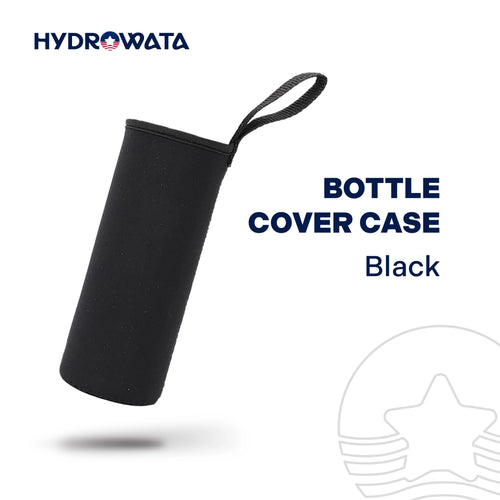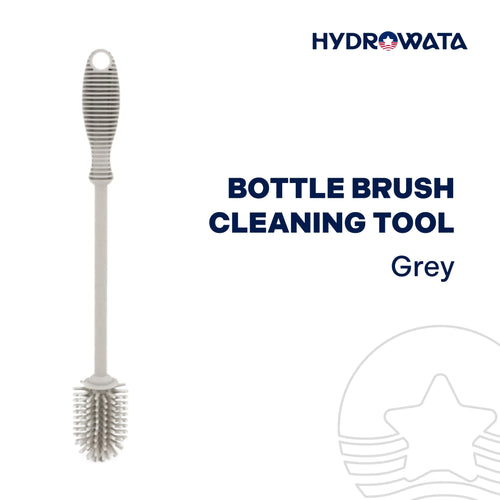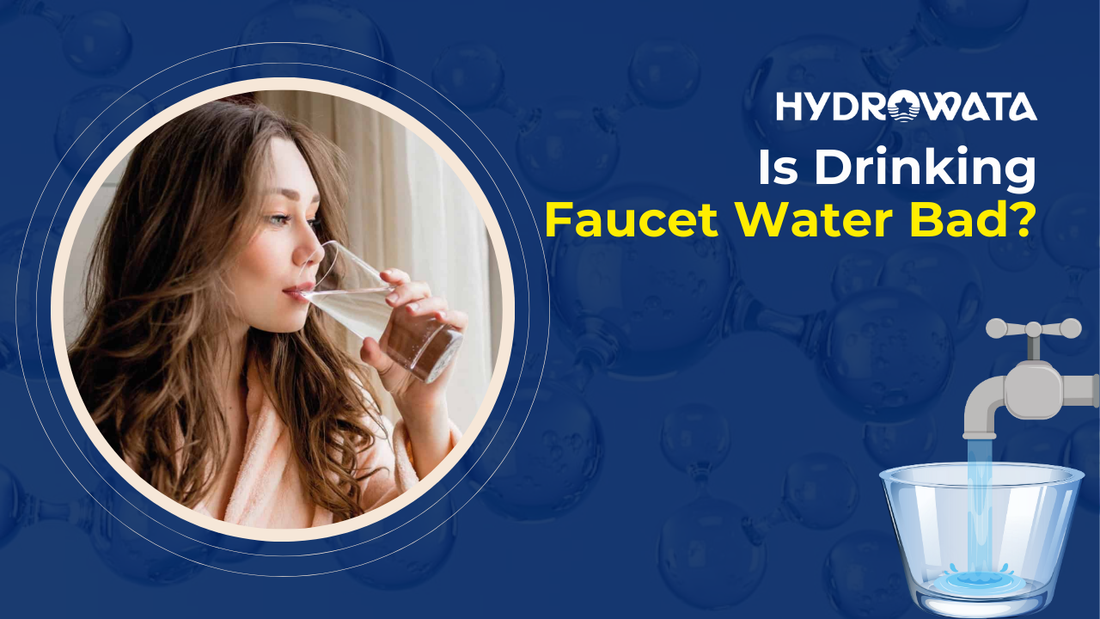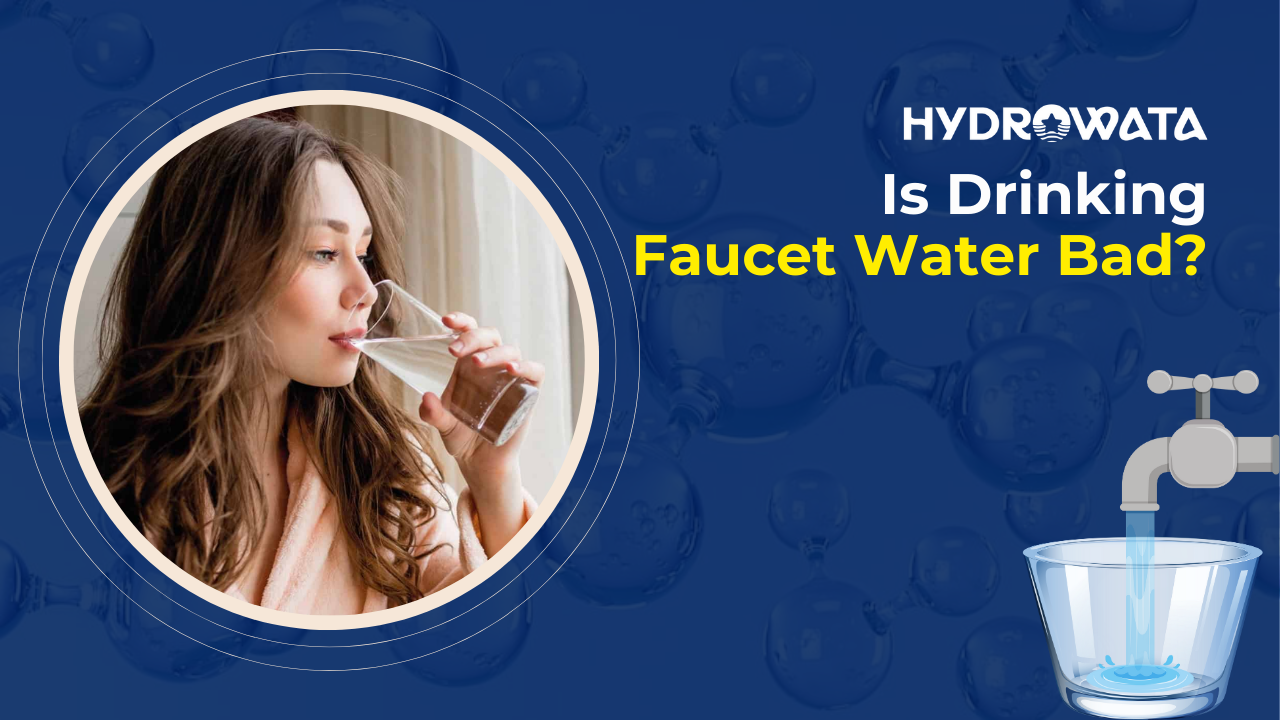Tap water is a crucial part of daily life, providing a convenient and cost-effective way to access drinking water. However, questions about its safety and quality often arise, making it essential to understand what may be present in the water flowing from your faucet. This guide explores the potential contaminants in tap water, their health impacts, and how you can ensure the water you consume is safe.
Why Clean Water is Essential

Water is essential for life. Our bodies rely on it for functions like digestion, temperature regulation, and even breathing. We lose water through sweating, breathing, and urination, and dehydration can lead to headaches, dry mouth, and other health issues. While we all have different hydration needs, the basic guideline is to drink at least 8 cups of water a day.
What is Tap Water?

Tap water is the water supplied to households, businesses, and public establishments through a network of pipes and plumbing systems. Its sources can include groundwater, rivers, reservoirs, and lakes. Tap water undergoes various treatments to make it safe for general use, such as drinking, cooking, and cleaning.
Is Drinking Faucet Water Bad?

Tap water safety depends on its source, treatment process, and the condition of the plumbing system delivering it. While many countries have strict regulations to ensure tap water safety, contaminants can still infiltrate the water supply.
Contaminants Found in Tap Water

Tap water may contain various contaminants that can affect health. Here is a list of potential pollutants commonly found in faucet water and their risks:
- Arsenic: A naturally occurring compound in groundwater. High levels of arsenic can cause skin discoloration, nausea, vomiting, partial paralysis, blindness, and even cancer.
- Chlorine: Added to public water systems to control microbes. Excess chlorine can lead to respiratory problems, chronic cough, and sore throat.
- Fluoride: Used since the 1940s to reduce cavities. Overexposure may cause bone stiffness, muscle loss, nerve problems, and joint issues.
- Heavy Metals: Includes lead, mercury, and others that may enter water systems. These can cause cardiovascular damage, kidney problems, brain damage, and cancer.
- Herbicides and Pesticides: Agricultural chemicals that can lead to headaches, nausea, long-term reproductive harm, and cancer.
- Sodium Chloride: Often introduced during water softening. Excess amounts can cause respiratory distress, vomiting, and convulsions.
- Nitrate: Naturally occurring in air, soil, and water. High levels may increase heart rate, cause headaches, cramps, and potentially lead to cancer.
- Radon: A natural gas dissolving in groundwater that increases cancer risk.
- Diethyl Phthalate: A chemical used in plastics that can disrupt hormones, lower sperm quality, and elevate cancer risk.
- Bacteria: Pathogens in water can cause diarrhea, nausea, vomiting, fever, and gastrointestinal inflammation.
- Phosphates: Found in fertilizers and detergents. High levels may damage blood vessels and increase cardiovascular disease risks.
- Pharmaceutical Drugs: Entering water through improper disposal, these raise concerns about antimicrobial resistance and other unknown health impacts.
- Dioxins: Toxic byproducts from combustion processes that interfere with hormones, suppress immunity, and increase cancer risks.
Risks of Drinking Polluted Tap Water

Drinking contaminated tap water can lead to serious health issues. For example, the water crisis in Flint, Michigan, exposed many people to unsafe lead levels, which can cause long-term problems like lower IQ, behavioral issues, and slow growth, especially in children. Lead is especially harmful to kids, as there's no safe level of lead in their blood.
Drinking contaminated tap water can lead to a host of serious health issues that affect various parts of the body. Here are some of the most significant risks:
Gastrointestinal Problems
Contaminants like bacteria, viruses, and parasites can cause stomach upset, diarrhea, vomiting, and other digestive issues. Prolonged exposure to these pathogens can lead to chronic gastrointestinal conditions.
Neurological Disorders
Heavy metals such as lead and mercury found in tap water can have severe effects on the nervous system. These contaminants are particularly dangerous for children, potentially causing developmental delays, learning difficulties, and behavioral problems.
Developmental Issues in Children
Exposure to toxins like nitrates, lead, and fluoride in excessive amounts can interfere with growth and development in children. These substances may lead to physical and cognitive impairments that can affect long-term health and well-being.
Chronic Diseases
Long-term exposure to certain contaminants, such as arsenic and dioxins, has been linked to an increased risk of chronic diseases, including various types of cancer, cardiovascular conditions, and kidney damage.
Reproductive Health Concerns
Chemicals like diethyl phthalate and pesticides in drinking water can disrupt hormone levels and reproductive functions. Over time, this exposure can result in fertility issues, complications during pregnancy, and harm to unborn children.
What You Should Check Before You Drink

Ensuring your tap water is safe involves understanding its quality and identifying any potential issues. Here are some steps you can take:
Water Quality Reports
Check your local water provider’s Consumer Confidence Report (CCR), which is usually released annually. This report provides detailed information on the quality of your tap water, the presence of contaminants, and whether the water meets safety standards. It is an essential resource for understanding what’s in your water.
Signs of Contamination
Be alert to noticeable changes in your water. Unusual taste, foul odors, or discoloration could indicate contamination. For instance, a metallic taste might suggest the presence of heavy metals, while a chlorine smell may indicate high disinfectant levels. Consistently observing such changes should prompt further investigation.
Testing Kits
Home testing kits are a practical tool for assessing water quality. These kits can measure levels of specific contaminants such as lead, nitrates, bacteria, and pH levels. Regular testing can help you identify issues early and determine whether additional filtration or treatment is needed.
Local Alerts and Advisories
Stay informed about water quality alerts issued by local authorities. Events like pipe breaks or natural disasters can temporarily affect water safety, requiring precautions like boiling water or using bottled water.
Professional Testing Services
If you suspect contamination or want a comprehensive analysis, consider hiring professional water testing services. These services provide detailed reports on a wide range of potential contaminants and offer guidance on solutions.
The Best Solutions for the Healthiest Water
Home Water Filter
 If you're worried about contaminants in tap water or the high cost of bottled water, a home water filter is the best option. It provides clean water on demand, is cost-effective over time, and is more eco-friendly than bottled water. Consider installing an under-sink or whole-home filtration system for easy access to fresh, clean water every day.
If you're worried about contaminants in tap water or the high cost of bottled water, a home water filter is the best option. It provides clean water on demand, is cost-effective over time, and is more eco-friendly than bottled water. Consider installing an under-sink or whole-home filtration system for easy access to fresh, clean water every day.
HydroWata Alkaline Charcoal Water Filter Jug

An Alkaline Charcoal Water Filter Jug is a simple and convenient solution for improving the quality of your drinking water. These jugs enhance the pH level of water, making it more alkaline, which some believe provides health benefits such as improved hydration and better acid-base balance in the body. The filter also helps remove common impurities like chlorine, heavy metals, and pesticides. Simply fill the jug, let the filter work its magic, and enjoy fresh, healthier water at home or on the go.
HydroWata Alkaline Water Stick

For those who want a portable option, a HydroWata Alkaline Water Stick is an excellent choice. These sticks contain natural minerals that help increase the pH of your water while also infusing beneficial minerals like calcium and magnesium. Simply place the stick in a bottle or glass of water, wait a few minutes, and enjoy alkalized water anywhere. It's a cost-effective and travel-friendly way to ensure you have access to better-quality water wherever you go.
HydroWata Hydrogen Water Bottle

If you’re looking for the latest in water innovation, the HydroWata Hydrogen Water Bottle is a top-tier solution. This advanced bottle infuses water with molecular hydrogen, which is believed to have powerful antioxidant properties and potential benefits for energy, metabolism, and overall health. Hydrogen water may help reduce inflammation, improve athletic performance, and support anti-aging processes. With HydroWata, you can enjoy the benefits of hydrogen-enriched water conveniently, whether at home, at the gym, or on the move.
Conclusion
Understanding the potential risks associated with tap water is the first step in ensuring its safety for you and your family. Choosing the right water solution depends on your needs and lifestyle. Whether you opt for a home filtration system, an alkaline water jug, a portable alkaline stick, or the advanced HydroWata hydrogen water bottle, investing in healthier water options is a step towards better well-being. Clean, high-quality water is essential for hydration, detoxification, and overall health, so make the best choice for you and your family today.
HydroWata is a trusted hydrogen water brand provides an innovative way to enhance your drinking water by generating hydrogen-rich water. Benefits include improved antioxidant levels, enhanced hydration, and support for overall well-being. Combining advanced technology with convenience, HydroWata offers a safe and eco-friendly option for those seeking optimal water quality. To learn more about our product, please visit: Hydrogen Water Bottle.
FAQs
1. How can I tell if my tap water is safe to drink?
You can check the water quality report from your local water supplier, use a home water testing kit, or observe for unusual taste, odor, or discoloration.
2. Does boiling water make it safe to drink?
Boiling water can kill bacteria and viruses but does not remove chemical contaminants like lead or pesticides.
3. Should I use a water filter for tap water?
Using a water filter can help remove specific contaminants, but you should choose a filter certified for the substances you want to eliminate.
4. Is bottled water safer than tap water?
Not necessarily. Bottled water is regulated differently and often lacks transparency about its source and treatment process. However, bottled water from trusted providers can be a safe alternative. Always verify the brand’s reputation and ensure it meets industry standards. Keep in mind that bottled water has a higher environmental impact due to plastic waste and transportation emissions.
5. What should I do if my tap water contains lead?
Use a certified water filter that removes lead or switch to bottled water until the issue is resolved. Contact your water supplier for assistance.
6. How often should I test my tap water?
If your water comes from a public system, annual checks may suffice. For private wells, testing is recommended at least once a year or whenever changes occur.
7. Can pets drink tap water?
Most tap water is safe for pets, but contaminants that affect humans can also impact animals. Filtered water is a safer option.
8. Does location affect tap water safety?
Yes, water quality varies by location due to differences in water sources, treatment processes, and infrastructure.





